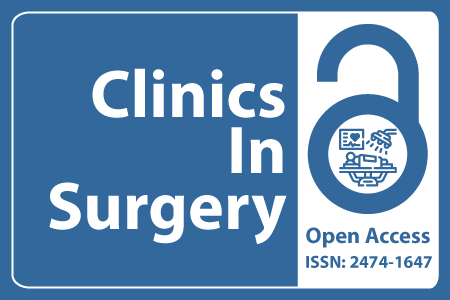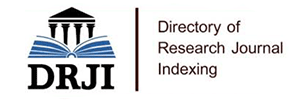
Journal Basic Info
- Impact Factor: 1.995**
- H-Index: 8
- ISSN: 2474-1647
- DOI: 10.25107/2474-1647
Major Scope
- Surgical Oncology
- General Surgery
- Colon and Rectal Surgery
- Gynecological Surgery
- Otolaryngology - Head and Neck Surgery
- Transplant Surgery
- Vascular Surgery
- Plastic Surgery
Abstract
Citation: Clin Surg. 2021;6(1):3277.Research Article | Open Access
Conversion to Reverse Total Shoulder Arthroplasty with and without Humeral Stem Retention: Mid-to Long-Term Results
Marios Loucas*, Rafael Loucas, Philipp Kriechling, Samy Bouaicha and Karl Wieser
Department of Orthopedics, Balgrist University Hospital, Zurich, Switzerland
*Correspondance to: Marios Loucas
PDF Full Text DOI: 10.25107/2474-1647.3277
Abstract
Background: Over the past decade, conversion to Reverse Total Shoulder Arthroplasty (RTSA) has become the preferred treatment for revision of an Anatomic Hemi (HA) or Total Shoulder Arthroplasty (TSA). However, conversion of failed stemmed shoulder arthroplasty to RTSA is still a highly demanding procedure and carries unique technical challenges and risks. Questions/Purposes: This study aimed to analyze the mid- to long-term results after conversion of failed anatomical shoulder arthroplasty to RTSA and investigate whether preserving the humeral stem offers advantages over revising the humeral stem. Materials and Methods: Between 2005 and 2018, 99 hemiarthroplasties and 62 total shoulder arthroplasties (total =161 shoulders; 157 patients) were revised to RTSA without (n=47) or with (n=114) stem exchange. Complications and revisions were documented from medical and surgical records. Longitudinal pre- and post-operative clinical (Constant-Murley (CS) score, Subjective Shoulder Value (SSV)), and radiographic outcomes were assessed. Complete clinical and radiographic follow-up was available on 80% of shoulders (127 patients; 128 of 161 procedures, 46 without and 82 with stem exchange) at a minimum of 24 months and a mean of 70 months (range, 24 to 184 months). Results: Humeral stem retention was associated with a significantly reduced surgical time (193 min vs. 227 min, p=0.001, less blood loss (591 mL vs. 753 mL, p=0.037), less intraoperative complications (13% vs. 19%; Odds Ratio (OR), 1.4, p=0.32) and fewer subsequent reinterventions (19% vs. 28%; OR, 2.3, p=0.06). The complication/revision rate leading to drop out from the study was considerable in the stem revision group (ten patients; ten of 114 shoulders (9%)), but there were no complicationrelated dropouts in the stem-retaining group. Conclusion: Our findings suggest that humeral stem revision is associated with decreased surgical time, less blood loss, less intra- and postoperative complications, and a lower revision rate compared to humeral stem retention. Based on these findings, a shoulder arthroplasty system modularity
Keywords
Reverse total shoulder arthroplasty; Revision shoulder arthroplasty; Failed shoulder arthroplasty; Hemiarthroplasty; Anatomic total shoulder arthroplasty; Conversion
Cite the article
Loucas M, Loucas R, Kriechling P, Bouaicha S, Wieser K. Conversion to Reverse Total Shoulder Arthroplasty with and without Humeral Stem Retention: Mid-to Long-Term Results. Clin Surg. 2021; 6: 3277..













